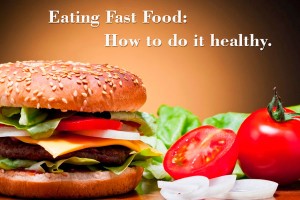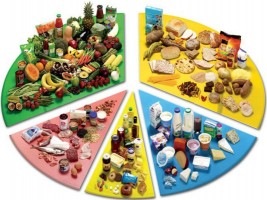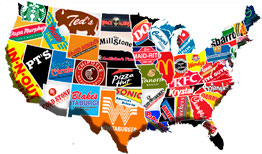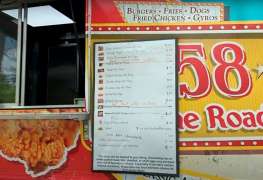 Food for thought when fast food’s on the menu.
Food for thought when fast food’s on the menu.
The words “fast food” may conjure images of greasy burgers, salty fries and frosty shakes brimming with fat and sugar. The truth is, fast food doesn’t always mean “bad for you,” said Linda Van Horn, professor of preventive medicine at Northwestern University. “You just have to be selective, both about the choice of restaurant and the choices you make when you get there,” Van Horn said. “Some, but not all, fast food restaurants have grilled chicken, salads, low-fat milk, fruit and even oatmeal choices for breakfast. Figure out which restaurants offer such options and try to frequent those more often. Consumer behavior strongly influences what restaurants choose to serve, so if you want healthier choices, choose them and let it be known.”
Even if you’re in good heart health, try to avoid poor food choices, especially the obvious culprits that are deep fried, swimming in cream or butter, showered in salt or glittering with sugar. Even a salad that may seem healthy is just a few dollops of fatty dressing away from being bad for your heart.
“A salad loaded with bacon, salty high-fat dressing and cheeses can have more calories than a hamburger or piece of thin-crust cheese pizza,” Van Horn said.
Diet is an important part of your overall health. A diet high in saturated and trans fats raises blood cholesterol — a major risk factor for heart disease and stroke. Too much sodium can raise your blood pressure and too much fat and sugar can lead to obesity, both of which may contribute to heart disease as well.
Make informed food choices
 Knowing what you’re eating is truly the best way to understand the health risks, and there are many resources available. The American Heart Association’s Heart Check program offers plenty to chew on making it easy to find better options when eating away from home with the Heart-Check mark certification for heart-healthy meals.
Knowing what you’re eating is truly the best way to understand the health risks, and there are many resources available. The American Heart Association’s Heart Check program offers plenty to chew on making it easy to find better options when eating away from home with the Heart-Check mark certification for heart-healthy meals.
Heart-Check mark logoSimply look for the Heart-Check mark on the menu—it’s similar to the one you may recognize from heart-healthy foods in the grocery store.
When you see the Heart-Check mark on the menu, you’ll know right away that the meal has been certified to meet our nutritional standards.
Currently, not all fast food restaurants include nutrition information. A provision of the Affordable Care Act will require businesses with more than 20 locations to calculate the nutritional content for all food products and post the information on menus and signs, but final rules from the Food and Drug Administration are still pending.
Craving fast food? Not so fast.
If you find yourself driving through for fast food, avoid super-sizing your order to help cut down on fat, salt and sugar.
The grocery store can be a healthy alternative to fast food, Van Horn said. That’s because anything that comes in a box, can or frozen package must have a nutrition label so you can compare products and pick the healthier option.
“It’s often cheaper and just as easy to run into a grocery store and buy more nutritious food like a freshly made sandwich on whole-grain bread using fresh turkey or chicken and a piece of fruit,” Van Horn said. “Also, many grocery stores sell packaged salads and soups to go, but again, read the label. When it comes to choosing a quick meal, you can think inside or outside the fast food box.”








Leave a comment